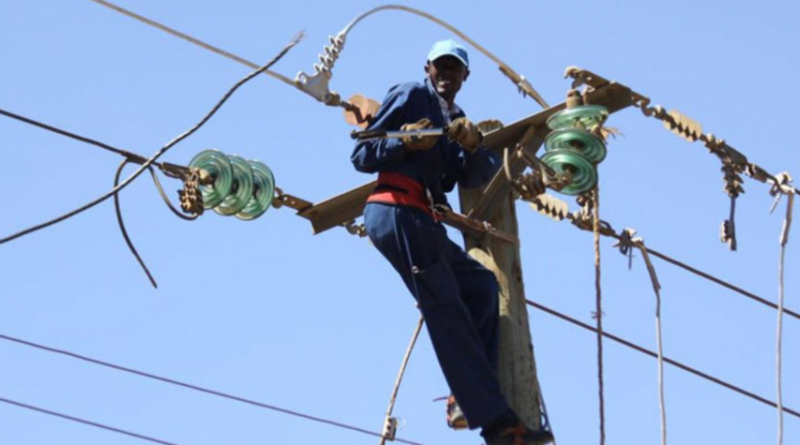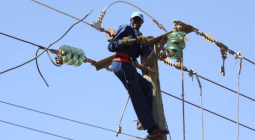Costly electricity bars Kenya from becoming energy-secure country.

Expensive pricing has hit Kenya’s transition into an energy-secure country over the past decade, a new index shows, despite improvements in customer connections, uptake of renewable energy and high capital investment.
The Energy Transition Index for 2021 by the World Economic Forum (WEF) says though Kenya is among developing nations that had steadily increased electricity access over the review period, its pricing remained a challenge.
The country is ranked at position 61 in the index benchmarking 115 countries on their transition progress, compared to position 71 in 2019.
The report shows the country scored 58 percent below the global average of 59.3 percent.
The ETI index is composed of two equally weighted sub-indices: the current energy system performance and the right environment for transition.
It defines effective energy transition as a timely step towards a more inclusive, sustainable, affordable and secure system that creates value for consumers.
In 2019, Kenya scored 52 percent against a global average of 57.6 per cent.
Sweden leads in the global ranking, followed by Norway and Denmark.
“Over the past decade, the average global scores for this dimension have been largely flat, reflecting the continuing challenge to decouple economic growth from energy production and consumption,” the report stated.
Less than half of the countries tracked were able to increase their scores on the economic development and growth dimension.
“The effect is more pronounced for advanced economies, with the primary factor being a 25 percent real-terms increase in average household electricity tariffs over the past decade for this peer group.”
Kenya has increased electricity tariffs over the period.
Most domestic customers are charged between Sh17.17 and Sh24.18 per kilowatt-hour (kWh), depending on consumption bands.
Small commercial businesses pay Sh17.17 to Sh23.94 per kilowatt-hour.
In July 2010, it was Sh14.13 to Sh15.14 for households and Sh11.38 for small businesses.
The bills include the cost of power, distribution, and taxes. They are also dependent on currency exchange rate, inflation and fixed charges – which account for 54 percent of the total bill.
In November last year, the Energy and Petroleum Regulatory Authority (Epra) allowed the power distributor Kenya Power to increase the charges by at least 20 percent.
However, Kenya Power made a U-turn on this move in March after it announced plans to renegotiate downwards capacity charges on existing power purchase agreements (PPAs).
High power costs hurt household budgets and raise the cost of doing business.
ACCESS, SECURITY
The improvement in the overall ranking over the decade is tied to increased electricity access helped by reduced import dependence and a diversified energy mix.
According to the WEF survey, Kenya, Ghana, Mozambique, Cambodia and Vietnam increased electricity access over the period.
An estimated 90 percent of the installed power capacity equivalent to 2,336 megawatts in the national grid is from renewable sources, including hydro, solar, geothermal and wind.
“Advanced economies and large fuel exporters score highly, due to more mature energy infrastructure and domestic reserves. The highest improvements in this dimension come from lower middle-income and low-income countries,” it reported.
“For countries dependent on imported energy supplies, maintaining diversity of import counterparts is critical. Renewable energy and energy efficiency have a synergistic effect of reducing import dependence while adding diversity to the energy mix, underscoring the security gains from energy transition.”
Access to electricity in the country has been helped by the government’s Last Mile Connectivity Programme that was launched in 2015 aimed at connecting households in slums and rural areas to the national grid with the goal of attaining universal access to electricity by 2020.
The programme was to be carried out in four phases targeting around 1.2 million people living near Kenya Power’s 35,000 transformers. It has a special connection fee of Sh15,000 instead of the usual Sh35,000 to Sh75,000.
In the three years to June 2020, Kenya connected 1,522,858 customers to the national grid in the three-year period.
National Treasury Cabinet Secretary Ukur Yatani said this brings to more than 7.2 million households connected to power under the programme funded by the World Bank, the African Development Bank (AfDB) and government.
The second phase that started in October 2016 is planned to be completed in December 2022.
The project that will cost about Sh77.6 billion, has been delayed by budget cuts, shortage of poles and costly tenders.
The World Economic Forum report added that the number of people without access to electricity has declined to 770 million in 2019 — the lowest on record, from 1.2 billion in 2010.
About 75 percent of this population that is not connected to electricity is in sub-Saharan Africa, a share that is rising due to growing population.
This is made worse by the widening income gap between the sub-Saharan region and the rest of the world due to Covid-19.
“Past progress is threatened by Covid-19. The International Energy Agency suggests that the number of people without access to electricity in sub-Saharan Africa is set to increase in 2020, pushing many countries farther away from achieving the goal of universal access by 2030,” it added.
In almost all countries, the top 10 percent income group consumes 20 times more energy than the bottom 10 percent.
“Energy access programmes need to focus on the quality of energy supply, the diversity of energy services available to households and the distribution of consumption across the country. Addressing inequalities in energy access is an important mechanism to ensure the resilience of the energy transition.’’
CAPITAL AND INVESTMENT
The report shows energy investments over the decade have focused on a handful economies, with China and the United States (US) accounting for the largest share of investments.
However, outside of this, Kenya is among countries such as Vietnam, Brazil, South Africa and Chile that also lead in record levels of investments due to right policies, infrastructure and better integration into global financial markets.
This shows the country has what it takes to deliver on the transition.
Funding for energy transition has hit $501 billion (Sh53.35 trillion) of global investment in 2020, up from $458 billion (Sh46.71 trillion) in 2019.
The global investment in the energy transition was recorded at $250 billion in 2010 (Sh19.81 trillion).
Mature renewable energy technologies account for most of this investment, while other areas such as mobility, electrified heat, storage, and carbon capture and storage account for a small percentage.
4 May 2021
Business Daily




